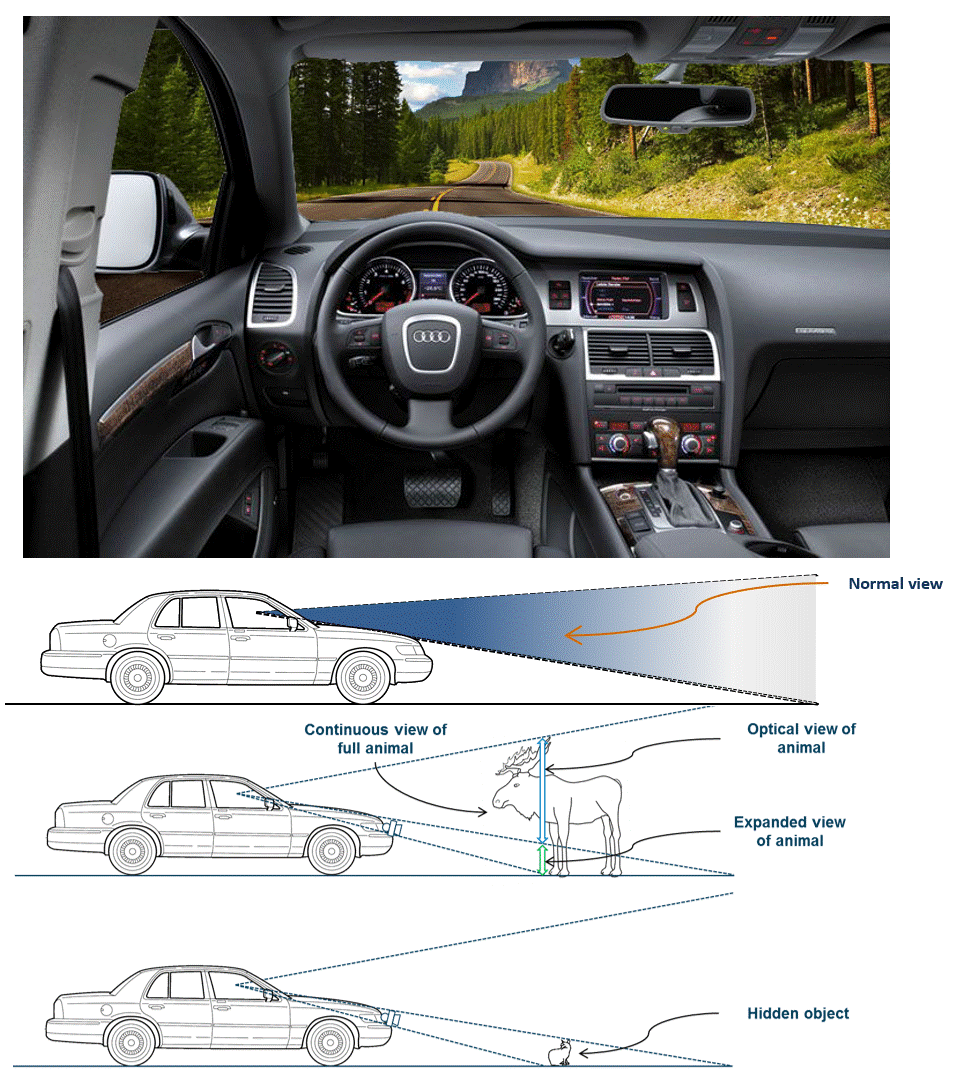See-Through Dashboard
Project developed at: Harman International
The See-Through Dashboard enhances driver visibility by expanding the vertical field of view, allowing drivers to "see through" the dashboard and better understand their vehicle's immediate surroundings, particularly close and low areas. This system leverages robotically actuated stereo cameras mounted on the car's bumper and view-dependent rendering to create the experience of a "transparent cockpit," improving safety for driving and parking.
As project lead, I developed proof-of-concept prototypes that included mechanically actuated cameras, view-dependent rendering, and stereoscopic 3D rendering displayed on a zSpace display system. This work resulted in two granted patents and contributed to the advancement of automotive visualization technologies.
The See-Through Dashboard expands the driver’s view downward through the instrument cluster, enhancing awareness of the vehicle’s close and low surroundings. The system uses a 3D instrument cluster display, view-dependent rendering, and stereoscopic cameras to create a realistic depth effect, making the road appear at its actual distance rather than on the display surface.
Company: Harman International
Team: Future Experience Team
Location: Palo Alto, CA
Year: 2014-2015
In this illustration we compare two implementation approaches. The PoC uses robotic cameras to demonstrate synchronization with the driver’s head movements. However, for production, a solid-state camera array mounted on the bumper is more practical, eliminating the need for moving parts.
This concept video showcases a fully functional prototype for the See-Through Dashboard system. The setup includes a stereo camera pair mounted on a robotically actuated rail, each equipped with pan-tilt capabilities to dynamically adjust the perspective based on the user’s head position and orientation.
The zSpace 3D screen renders real-time view-dependent visuals from the dual cameras to create a 3D effect in sync with the user’s eyes, simulating the experience of looking "through" the dashboard. Although the video cannot show the 3D effect, production systems would use glasses-free auto-stereoscopic displays. High-resolution head tracking ensures precise camera adjustments for a seamless and immersive user experience.
This video captures a key moment during the prototyping of the video see-through display's camera stereo pair. At this early stage, the motors were programmed to rapidly move between predetermined positions, testing both the speed of movement and the clearance between the cameras.
Rapid prototyping is full of these small yet significant successes that deserve to be celebrated and appreciated as vital steps on the path to building the final demonstrator.




